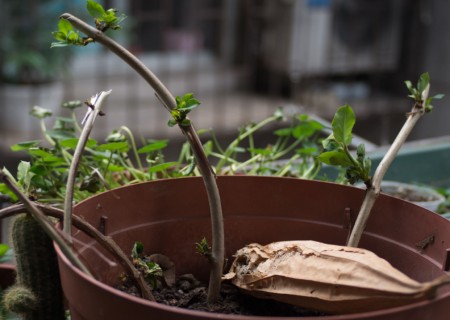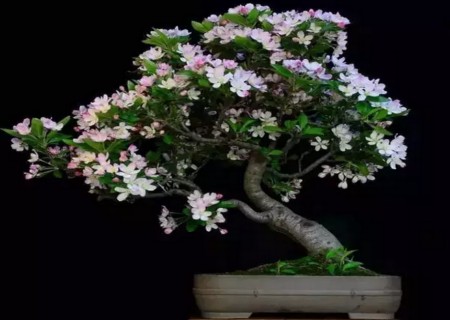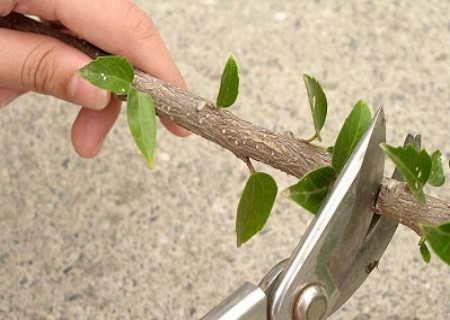Diagram of cutting method of Flos Lonicerae
Honeysuckle is one of the 38 valuable traditional Chinese medicines under national key management. It has a wide range of uses in medicine, health care, economic ecology and other aspects. The wide use of honeysuckle has brought huge economic benefits. with the successive development of all kinds of honeysuckle products, the market demand has increased exponentially, but the price of honeysuckle has been rising.

The propagation methods of Flos Lonicerae include cutting, seed, root division and striping propagation. However, the most simple and feasible method is cutting propagation, and cutting is divided into direct cutting and cutting seedlings. Because the direct cutting occupies a large area and the survival rate is low, which is disadvantageous to the seedling management, cutting seedlings are often used for propagation. The following is to introduce the cutting propagation technology of Flos Lonicerae.
Cutting materials of Flos Lonicerae
1. Branches
Select varieties with fast-growing branches and early flowering, such as fast-growing honeysuckle No. 5, and select twigs with strong growth and free of diseases and insect pests.
2. Matrix
The cutting matrix of seedlings should make full use of local resources, according to local conditions, low cost, good ventilation, good performance of water retention and heat preservation, and light weight, so that the seedlings are easy to take root and easy to carry.
3. Container selection
Selecting a suitable seedling container can make the seedlings form a good balanced root system. The seedling stage of honeysuckle is short, and the plastic nutrition cup with small size, light weight and convenient transportation can be selected according to the situation.
4. Selection and allocation of rooting elements.
Honeysuckle needs to use plant rooting hormone to treat cuttings, promote rooting and improve the survival rate of cuttings. Usually use rooting stimulants such as indolebutyric acid, indoleacetic acid, naphthylacetic acid, 2Magne4Rhd, ABT rooting powder, etc., which can be used alone or mixed with different concentrations, but the rooting effect is not ideal. We use "Yuhualing" rooting agent treatment, can better solve this technical problem, the root system is explosive rooting, see figure.
5. Selection of fungicides
Quicklime was used for rough disinfection in the nursery area, and 2000 times potassium permanganate was sprayed evenly in the matrix disinfection. Branches and seedlings should be disinfected with agents with high efficacy, strong bactericidal power and little drug harm. The commonly used disinfectants are chlorothalonil, carbendazim, methyl topiramate, etc., all kinds of disinfectants should be used alternately.
2. Cutting methods of Flos Lonicerae
1. Select the insert
In the growing and flowering season, those plants with pure varieties, strong growth and enlarged buds should be marked as excellent mother plants, and 1-2-year-old branches should be selected on the selected mother plants in late autumn and early winter as cuttings, or can also be collected in combination with summer or winter shearing. After harvest, it is cut into ear segments of 25cm and 40cm and bundled up, placed upright indoors or in a cool place, and covered with wet grass bags or buried in soil for storage until the next spring. Insertion requirements: short internodes, strong growth, no diseases and insect pests.
2. Cutter treatment
The length of long wood cuttings is 30cm to 40cm, the length of short wood cuttings is about 25cm, and the thickness of cuttings is 0.5cm to 1.5cm. Cut the stem node at the lower end of the cuttings into a smooth slope according to the length requirements. The upper end was cut flat at 1.5 cm above the node, and the cut cuttings were made into a bundle every 50 or 100. the lower end was immersed in 500ppm indole butyric acid solution for 5 minutes for 10 minutes, and then the cuttings could be cut after a little air.
3. Cutting process
The main results are as follows: 1) the long wood cutting seedlings are trenched according to the row spacing of 30 cm, and the ditch depth is 25 cm, and then the cuttings are placed in the trench according to the plant spacing of 20 cm, and the soil is firmly sealed. This method can raise 11000 seedlings per mu.
B) the seedlings raised by short wood cuttings are roughly the same as above, the row spacing can be reduced to 25 cm and 15 cm, and 18000 seedlings can be raised per mu. The depth of cuttings in these two cutting methods should reach more than 2 × 3 of the length of cuttings.
4. Seed and seedling management
The cuttings should be watered once on the same day or the next day. To keep the soil moist and promote its germination, it should be transplanted in the spring of next year.
Third, the key points of honeysuckle cutting
Honeysuckle can be cut all the year round, but the survival rate of cutting in spring and autumn is higher. Over the past few years, as long as there are pruned branches, I will use them for cutting. The main points of cutting are as follows:
1. Choose branches that are sturdy (easier to survive), straight (easy to insert and grow), and thinner leaf spacing (personal preference, like tall and tall ones, do not like short and shrunken ones).
2. Each cutting branch generally leaves two or three nodes, leaving only two leaves of the upper section, and the other leaves are cut off.
3. Insert the cut branch obliquely into the soil, the depth is 1 stroke 2 of the branch, and press the fruit slightly.
4. pour the soil thoroughly after insertion, keep the soil moist and put it in a ventilated place without direct sunlight, which can take root after about half a month; after rooting, put it outside in time for normal management, and transplant according to the situation.
5. If the cuttings are cut in spring, new buds will sprout quickly among the leaves, but there will be no roots, so the management can not be relaxed at this time.
6. Some friends like to often pull out the cutting branches to watch. If they find that there is a nodule in the lower part of the cutting branch (similar to the appearance of rhizobium, although it does not take root, such branches have already survived. )
Time: 2019-06-09 Click:
- Prev

How to trim the crabapple bonsai
In the poem of Yang Wanli in the Song Dynasty: don't get a scenery, who lost all Shu Begonia. The wind stirs the jade emperor red world, drying the purple clothes of the blue emperor. Lazy and powerless, still drunk in spring, sleep with mental desire to know makeup. Like the old man's new sentence, look at the canal peach and apricot dare to bear. The bright red petals of the flirtatious Begonia stir up the blue sky and the sky.
- Next

Illustration of new techniques for plant cutting propagation
Plant cuttage is one of the excellent methods of seedling culture. Cutting propagation is to use the regeneration ability of plant roots, stems, leaves and buds to make it take root and sprout to form new plants under appropriate conditions, which has the characteristics of fast propagation, easy collection, small genetic change, convenient management and so on. The weather is getting hotter every day.
Related
- Fuxing push coffee new agricultural production and marketing class: lack of small-scale processing plants
- Jujube rice field leisure farm deep ploughing Yilan for five years to create a space for organic food and play
- Nongyu Farm-A trial of organic papaya for brave women with advanced technology
- Four points for attention in the prevention and control of diseases and insect pests of edible fungi
- How to add nutrient solution to Edible Fungi
- Is there any good way to control edible fungus mites?
- Open Inoculation Technology of Edible Fungi
- Is there any clever way to use fertilizer for edible fungus in winter?
- What agents are used to kill the pathogens of edible fungi in the mushroom shed?
- Rapid drying of Edible Fungi

